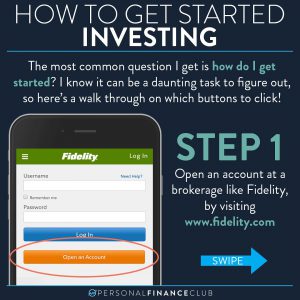




When I say “buy and hold index funds” this is what I mean. A three-fund portfolio is a simple way to diversify across the world’s stock and bond markets. It guarantees yourself your fair share of the full world’s market growth. It’s optimal investing with in an extremely simple package.
This is basically how it works: You invest your entire portfolio into these three things:
• A US stock market index fund
• An international (Non-US) stock market index fund
• A bond fund
Why those three? Because inside of them is basically a complete and extremely diverse portfolio. You own all of the world’s stocks and bonds in a very simple package.
How much of each fund? The larger proportion of stocks, the more aggressive the portfolio. That generally makes sense for younger people who are in the wealth accumulation phase of their lives. If the market plummets, it’s actually good for them as they can acquire more shares at a lower cost since they’re buying. If you’re older, you might want to tilt your percentages towards bonds. Because if you’re selling some of your portfolio each year to live in retirement, a market crash would be bad for you, so you might prefer to have more stable, income producing bonds.
How do you choose which 3-fund portfolio? Each of the “total US index funds” listed will perform nearly identically. So which one you choose is more of a matter of logistics, than optimization. i.e. if you have your accounts with Vanguard, buy Vanguard funds to minimize fees.
Is there an easier way? Well yes! You know I love me a target date index fund! That’s basically a single package with a three-fund portfolio inside. It handles the asset allocation and rebalancing for you! But if you want to customize your own percentages or you are investing somewhere where a target date index fund isn’t available, a 3-fund portfolio could be a perfect solution!
As always, reminding you to build wealth by following the two PFC rules: 1.) Live below your means and 2.) Invest early and often.
-Jeremy

 September Sale!
September Sale! 



